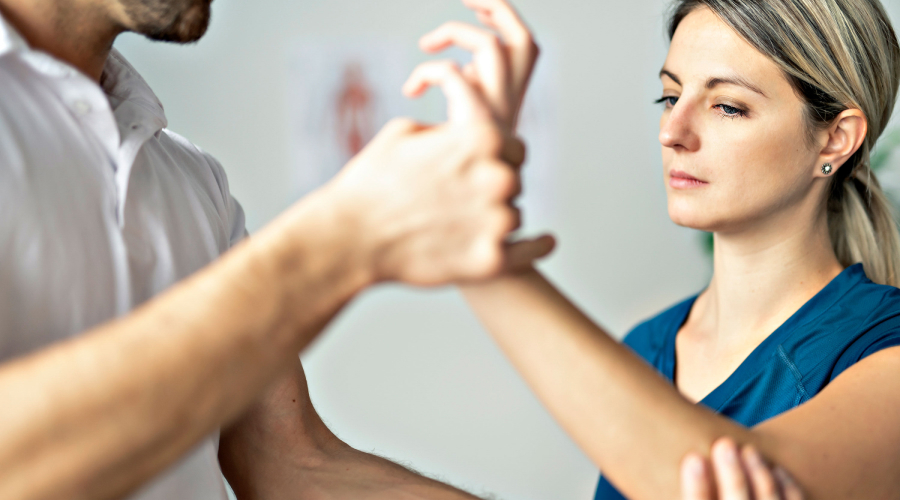
This month, the team at Access Sports Medicine is proud to recognize and celebrate Occupational Therapy Month. This practice is a core piece of all we do, and we’re grateful for the incredible work our occupational therapists do each day to help people get back on their feet.
We sat down with our very own hand therapist, Colleen Allen, to discuss how the field has grown over the years and its importance not just for student-athletes, but anyone recovering from an injury.
What is Occupational Therapy?
This complex practice helps patients adapt or relearn how to do different tasks some of us might not think twice about, like personal hygiene, cooking, driving, or going to work or school. For example, an occupational therapist may work with a patient who recently suffered a stroke and may need to regain certain motor skills or an injured worker to help them regain the function they need to do their job.
“As an occupational therapist, you can go in a lot of different directions,” Colleen said. “The importance of it is to get people to be independent again. As an OT, your job is to get people to do for themselves.”
Colleen has been exposed to many different OT practices throughout her career, seeing everything from head injuries to horse rehabilitation. She has practiced different specialties throughout her career; starting off working with pediatric patients, she switched to becoming a hand therapist a little over two decades ago.
“Something about hands just kind of resonated with me; it stayed with me. I think it’s because of the objectivity and the immediacy of it,” she said.
Like any job, occupational therapy is not without its challenges. But having a positive mindset (whether as a patient or an OT) can go a long way toward speeding up recovery and helping you get to your new normal.
“We care about our patients; we do a lot for them,” Colleen said. “We’re a shoulder to cry on; we laugh with them. Being sick and injured is no fun, but we try to make it so they look forward to coming in.”
Getting Started
Colleen’s advice to students starting their training is simple: try out as many specialties as you can to see which resonates with you.
“You could talk to 10 of us, and we would probably tell you something different about being an OT because it is so unique and so different,” she said.
For her, trying out new methods led to one of the most rewarding experiences in her career.
During a mission trip about 14 years ago in the Dominican Republic, she and another occupational therapist helped a man with a severe case of lymphedema (where fluid becomes back up in different parts of the body) for four days. In the end, a significant amount of fluid was drained from his fingers and his face, allowing him better use and comfort. Colleen was able to teach a separate man who lived there the different techniques so her patient could continue treatments going forward.
“He had such hope, and he was just so grateful,” she said. “I think that’s probably my biggest highlight. It just made me feel good doing that. I just thought, ‘If that’s the only person in my life that I’ve ever helped, that will be worth it.'”
The Access Sports Medicine Difference
In her current role, collaboration is really what sets Access Sports Medicine apart from other injury treatment specialists in the area. Oftentimes, hand surgeons like Dr. Jeffrey Rosenfield, are available on-site to check in on patients during OT sessions and answer any questions they might have.
“Working together gives patients a nice, cohesive treatment,” Colleen said. “They’re able to get questions right away, and we’re able to reassure patients.”
Learn the difference first hand and schedule an appointment at our closest Seacoast location today.


